Today, we have a guest post written by one of our Project Conservators, Lianyu Feng.
***
Lining is used to give support to an original paper document or artwork. When paper deteriorates, it gradually loses its strength, thus becoming brittle and weaker. Any unsuitable handling can cause further damage such as tearing, and could even cause the paper to fall to pieces. In our Unexplored Riches in Medical History project, such weak documents cannot be handled or read and so can’t be used for research. In order to repair these torn and fragmented documents and make them usable again, we line them with a supporting material.
The document below had many small fragments before it was repaired. These fragments needed to be re-attached to the document. Lining is a good method to do this in a fast way and give the whole document more support.
Below is another example showing severe deterioration, which has made the document fall to pieces. It would be impossible for anyone to read this easily.
A light box, such as the one below, helps us to place the fragments into the right position. It makes it easy to see where the gaps are, and then we can align the fragments into the exact positions.
If the object contains ink which is not sensitive to water, wet lining using Japanese tissue and special conservation adhesive is one of the most common methods. As lining should not obscure the information on the object, the back of the document or the side which contains the least information is the most suitable for lining. For example, the document below has had Japanese tissue placed on the back of it so as not to obscure the text on the front.
When wet lining has been carried out, the document will then need to dry. The document is dried under tension; this means that the document stays flat as it dries. This flattens existing creases and prevents new ones from appearing.
Once a document has been lined, the object will be stronger, and completely flat, with all the fragments having been re-attached and any tears stabilised. A lined document is both easier to handle and looks better aesthetically.
Below, we return to the document we saw earlier, which had completely fallen to pieces. Here it is after lining. All the pieces have been placed in the right position, although unfortunately some parts are still missing, such as the line in the middle. However, we can now handle and read this letter without difficulty.

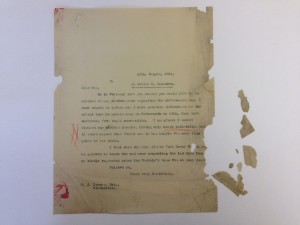
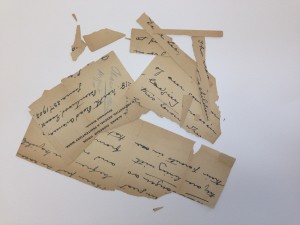
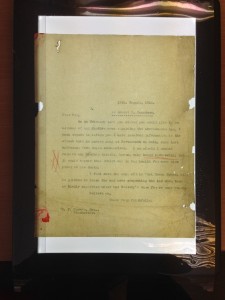
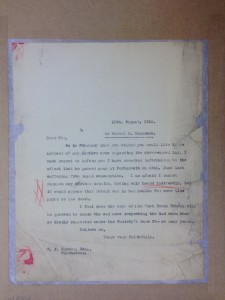
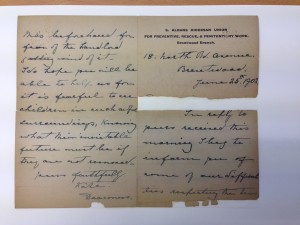
All the Unexplored Riches blog posts have been interesting, but the consersvation ones are particularly good because of showing processes most people don’t know about. Presumably there are other conservation blogs around, but yours being more mixed probably brings the conservation posts to a wider audience.
Thanks Catherine!
I agree. As I’m not a professional conservator myself, I find these posts from my conservator colleagues to be really fascinating. It’s amazing to see how useable the documents are after they’ve been repaired, especially when you compare them to what they were like before.
Janine